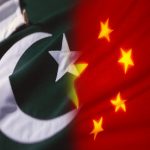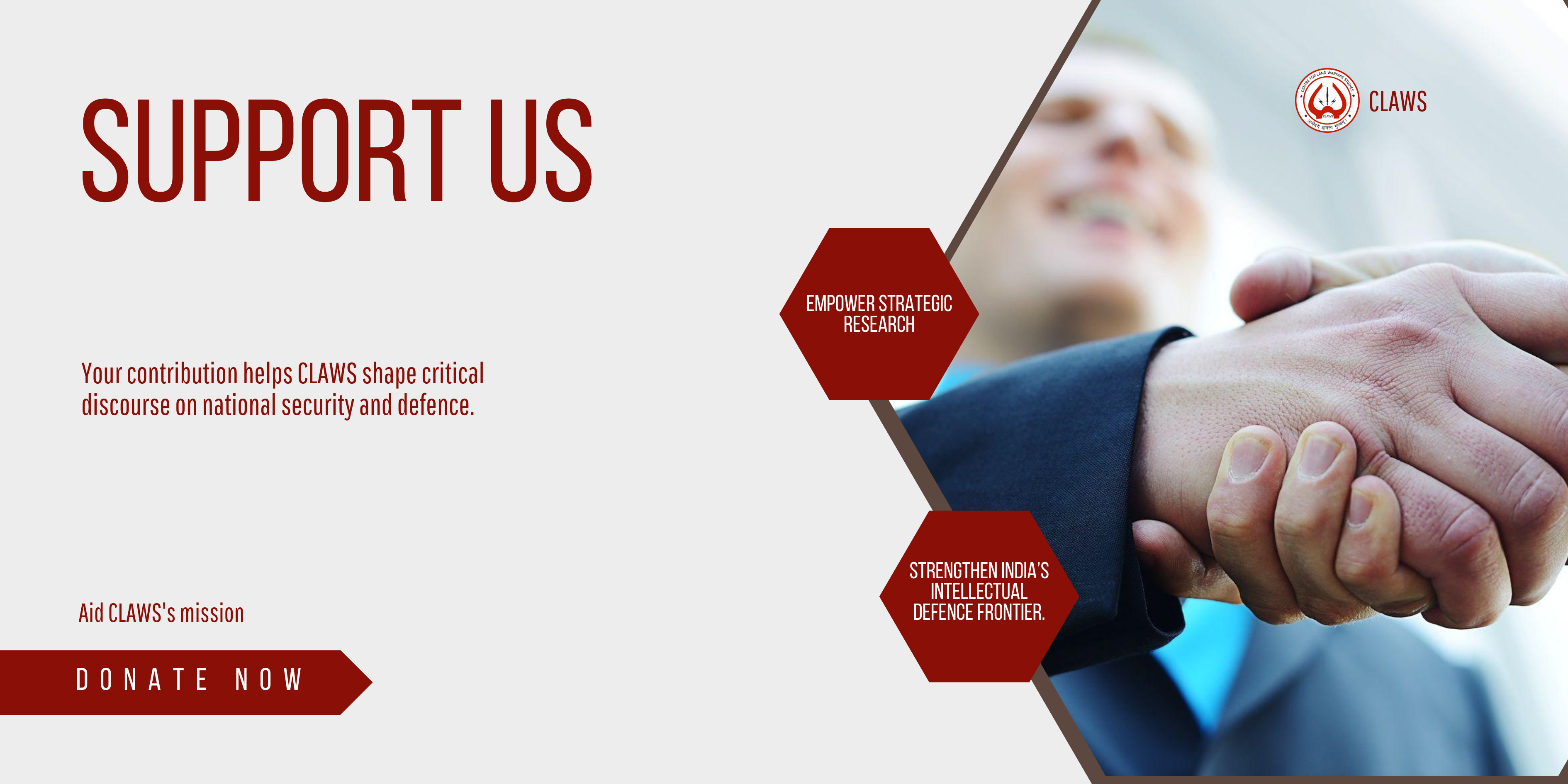India’s Prime Minister Narendra Modi has shown a proactive approach in terms of Indian Ocean Region. He mentioned SAGAR as “our vision for the Indian Ocean”. This is reflected in his SAGAR Initiative which stands for ‘Security and Growth for All in the Region’. The initiative was launched at Mauritius in 2015.[i]
For any policy to be evaluated, it is necessary to understand its strengths as well as shortcomings. A SWOT analysis of SAGAR would facilitate the understanding of India’s approach towards maritime diplomacy in a more comprehensive manner.
Strengths
India’s greatest strength in SAGAR initiative is its central location in the Indian Ocean, which provides India with an unrestricted access to Indian Ocean Region. The doctrine will help in leveraging the blue economy. Blue economy gives India a perfect opportunity to achieve its national and socio-economic goals. These include livelihood generation, energy security, building ecological resilience and strengthening connections with neighbours. SAGAR also provides India to maintain strategic partnerships with the littoral states of Indian Ocean Region in Asia and Africa.
A vital strength of the policy is that it provides India a leadership role and responsibility to engage in capacity building and capability enhancement programmes in the region particularly in a transparent manner. It can share its capabilities with its neighbours such as strong and capable maritime security forces, shipyards, industrial complexes, financial institutions etc. India has focused on issues that is of great interest to smaller states including security of natural resources, sustainable development, handling natural disasters, marine pollution and climate change.
The policy is highly relevant and can be interlinked to India’s other maritime initiatives such as the Act East Policy, Project Mausam, Project Sagarmala, Blue Economy etc.[ii]. India’s efforts to establish cordial relations with littoral states has helped to maintain a positive environment in the Indian Ocean Region. Thus, the importance of initiatives undertaken highlights the success of SAGAR in safeguarding maritime interests, deepening economic and security cooperation, disaster management, regional development and cordial engagement with other countries.
Weaknesses
SAGAR initiative’s weakness lies in its capacity and execution. India has the capability to offer maritime assets to other littoral states but it has limited capacity to execute them. This limitation of capacity multiplied by the lack of international coordination will disappoint the neighbours. India has not adequately harnessed its capabilities in maritime diplomacy which is reflected in its pattern of commitments for assets and manpower. This can make them to pay more attention to other powerful maritime powers, particularly China which is often creating relationships with various countries using its investment strategies[iii].
Another shortcoming in SAGAR policy is the lack of engagement of private sector along the lines of the initiative as well as engagement of multiple players , duplication of actions, as well as regional dependence on international navies[iv].
For a continued implementation of SAGAR initiative or any other maritime endeavor which involves a steady economy growth and prosperity as a prerequisite. A slowed down economy will create hindrance in the initiative and bring all the efforts of the government to a grinding halt.
Opportunities
SAGAR has provided India with the opportunity to gain leverage in the Indian Ocean Region. Recently, India was also granted the observer status in Indian Ocean Commission (IOC). India can learn from IOC’s working which is based on Bottom-up Regionalism. The IOC is an intergovernmental organisation comprising of small states in the Western Indian Ocean namely, the Comoros, Madagascar, Mauritius, Reunion and Seychelles[v]. Decisions in IOC are consensus-based and it has also demonstrated the organisation’s leadership in security domains. Due to this, India also showed interest in IOC. Although the structure of IOC is different, there are no “big brothers” influencing the decision making[vi]. It has its own regional agenda. However, India can play a very crucial role in this respect. Despite IOC’s initiatives having strong foundations, it requires support from regional actors. All littoral states need maritime assistance and capacity building for patrolling EEZs. Learning from and supporting sub-regional organisations like IOC can be a major objective of India’s maritime policy. SAGAR thus also needs to incorporate such goals in its agenda.
India’s SAGAR initiative can be utilised in reference to ‘Project Sagarmala’. Under Project Sagarmala, the objective is to revitalize the ports as they are important for trade and economic growth. Both projects are crucial, that is why debates on which project should be given priority are inevitable. Many of them point out that SAGAR should be given preference over Sagarmala[vii]. They argue that India should take initiatives in investing for maritime infrastructure in the IOR and in neighbouring countries such as Bangladesh, Myanmar, Sri Lanka etc. This is because China is already an investor in India’s neighbouring countries and is moving rapidly towards its vision of Maritime Silk Route. This is highly against India’s interest and that is why India should participate in investing in infrastructural projects in its neighbourhood.
Coast Guard Agencies play an integral role while engaging with the littoral states. Due to this reason, SAGAR vision should expand itself and include Coast Guard agencies of the IOR littoral countries.
Another important opportunity which lies ahead of India with regards to the potential of oceans and marine areas is to achieve the sustainable development goals. The ‘Growth’ through SAGAR should incorporate a more sustainable growth for India as well as the IOR littoral states. India should focus on conserving marine life and oceans, protecting coastal communities from the impacts of climate change, tackling marine pollution etc.
Threats
China has begun to act like a sea power in international affairs. Many states are cooperating with China actively, which has allowed it to maintain political links in order to improve its maritime influence. China launched its ‘one belt, one road’ initiative in 2013. The initiative aims to promote mutual economic growth through the flow of trade, policies, transportation and people. According to the “Vision and Actions on Jointly Building Silk Road Economic Belt and 21st Century Maritime Silk Road” which was issued by the government of China, there are five major areas of cooperation that China aims to focus on through its MSR strategy. These include, policy communication, road connectivity, trade, money circulation and cultural understanding[viii]. The Chinese government is therefore set to achieve what they call as the “Chinese dream” through a national rejuvenation[ix].
The security implications of China’s maritime strategy into the Indian Ocean need to be evaluated. Firstly, these efforts aim to increase Chinese influence in the region. China aims to achieve this through access to port facilities for its naval vessels as well as in terms of anti-piracy operations and familiarization with other regional militaries. However, China’s Indian Ocean presence will also create vulnerabilities regarding protection of trade routes, bases, and ships in wartime.
As analysed above, China has therefore emerged as a major maritime power in the last few years through its friendly offers of economic investments and infrastructure development. in such a scenario it becomes important for India to initiate a more robust maritime strategy. It needs to make necessary policy changes aiming at development of infrastructure, offshore resources and develop strategies for their sustainable use. SAGAR vision is thus important to counter the threats posed to India’s national interests.
Indian Navy is the fifth largest in the world, however it faces major problems in maintaining an adequate fleet. This is mainly because of procurement as India is still dependent heavily on imports. More specifically, inadequate size of shipbuilding industry, port handling facilities, connectivity and the size of the fleet indicates the shortcoming of India’s maritime strategy[x].
Another important task for India is the protection of sea routes as it is the vital link for trade and energy. This can be much easier for India due to its geographical location and it can also dominate the maritime traffic by connecting it through the Indian Ocean, the South China and the Western Pacific. This is highly vital keeping in mind the increasing maritime capability of China. Therefore India should evaluate its maritime ambitions in relation to its capabilities.
Conclusion
India’s capability to become a prime regional actor in the IOR cannot be ignored. It can promote free trade in the region with the help of other littoral states and provide them access to larger markets. It can play much greater role in cooperative maritime diplomacy through humanitarian assistance for disaster relief operations. SAGAR acknowledges the fact that peace and stability are important requisites for maritime security and economic development and thus sought to provide a favorable environment to India as well as to other littoral states. The positive aspect of this policy is that it filled a gap which existed in India’s maritime diplomacy and established a link between maritime cooperation, security and economic development. The policy also reflects the idea of naval power projection as initiatives under SAGAR is only possible for a country with a strong navy.
The opportunities that the initiative brings with its implementation are important for India’s maritime diplomacy and development of a Blue Economy. Threats do exist and some interventions at the right time and places can help to do wonders.
Endnotes:
[i] G. Padamja (2018), Revisiting ‘SAGAR’, India’s Template for Cooperation in the Indian Ocean Region, National Maritime Foundation, 25 April.
[ii] Nikunj Singh (2020), Mission Sagar, Key to the Indian Ocean, Observer Research Foundation, 8 October.
[iii] Kate Sullivan de Estrada (20200, Putting the SAGAR vision to test, The Hindu, 22 April.
[iv] Ibid
[v] Ibid
[vi] Ibid
[vii] Vice Admiral Anil Chopra (2016), Sagarmala or SAGAR, a maritime dilemma, Gateway House.
[viii] Gerald Chan (2018), Understanding China’s New Diplomacy, p.13
[ix] Rajeev Ranjan Chaturvedy (2017), The 21st Century Maritime Silk Route, 10 February.
[x] Anit Mukherjee & C. Raja Mohan (2016), India’s Naval Strategy and Asian security, p. 14













